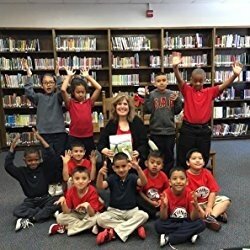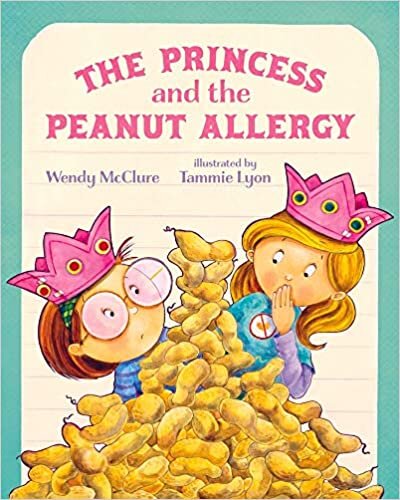Wendy McClure is a writer and a children’s book editor at Albert Whitman & Company. In fact, full disclosure, she’s been MY wonderful editor on four published picture books, with another on the way in 2021. Wendy has authored two picture books, the historical fiction series Wanderville, and worked on numerous books at Albert Whitman & Company. Her writing for adults includes the book The Wilder Life: My Adventures in the Lost World of Little House on the Prairie and work appearing in The New York Times Magazine, O, The Oprah Magazine, The Chicago Sun-Times, and the radio program This American Life. She has an MFA in poetry from the Iowa Writer’s Workshop. She lives in Chicago with her husband, Chris. I’m thrilled she’s taken time out of her busy schedule to shmooze on THE KIDS ARE ALL WRITE. Welcome, Wendy!
What inspired you to write It’s a Pumpkin!?
I've just always loved pumpkins. There's something a little mythical about them, the way they show up in fairy tales and nursery rhymes, but they're also so goofy in their way. My husband and I bought our first house in 2018, and of my favorite things about having a house is having a front porch for seasonal decorations, which in the fall means PUMPKINS. So I guess the story came out of some kind of idle meditation on pumpkins, and how they are so many things—decor, food, weird heavy projectiles, etc.
How long did it take to get from idea to finished manuscript?
This is very unusual for me: I wrote it in a single evening! The idea was knocking around in my head that afternoon at work, and I took five minutes to type a couple of lines in a document I saved to Dropbox. Then right when I got home I worked on it some more and had a finished draft by bedtime. But that almost never happens.
You're a longtime writer as well as an editor. But usually, you write for older children, young adults, and adults with books like The Wilder Life: My Adventures in the Lost World of Little House on the Prairie, I’m Not the New Me, and your humor book, The Amazing Mackerel Pudding Plan. Plus you do thrilling newsletter posts about the mysteries of your family history. How do you find time? And how can one head wear so many hats?
I published a couple of those books you mentioned fifteen years ago, so one answer to your question is that you can wear plenty of hats if you give yourself a long enough span of time! As for finding the time to write, it's mostly just that I love to write and so I make space for it in my life. Some years it's been more space, other years less—the year we bought a house, for instance, my only writing was my newsletter, which required only a few hours of work once a month. But really I'm no different from any other published author who also has a day job. I don't think enough people understand that this is the situation for most authors. It's funny how we don't talk about it, though: a lot of the authors I work with have full-time jobs but I don't know what they are! Not sure what that means: I think it's that we live our writing lives to the fullest in whatever space we have, and don't give much thought to what our colleagues do in their "other lives." It just happens that my other life as an editor is as visible to some people as my writing life. I don't think it means I do more!
The Princess and the Peanut Allergy by Wendy McClure, illustrated by Tammie Lyon (Albert Whitman)
The last picture book you wrote was the lovely The Princess and the Peanut Allergy in 2009 for Albert Whitman. Can you tell us how The Princess book came about and why it’s been so long between picture books for you?
That's a funny origin story. I was at work with my old boss, Kathy Tucker, and the other editors, and we were having our weekly meeting when we talk about upcoming seasons and the kinds of books we want to acquire. We wanted to publish another peanut allergy story but were having trouble finding something that worked and was different enough from another book we'd just done. And then we'd been hearing that princess books were popular, so we were casting about for one of those too. So I joked that all we needed was a book called The Princess and the Peanut Allergy, and Kathy looked up and said, "you should write that!" My husband has some lifelong food allergies, including a couple that are pretty rare, and I felt there was a need for a story about how to be a good friend to a person with food allergies, so that's the story I wrote. As for why it's been so long: well, as an editor, whenever I get that "this should be a picture book!" kind of notion, my first instinct is always to find an author to write it (or who has written something like it already) and publish THEIR book. Plus I get to see other people's great ideas become great picture books all the time, and being part of that process is deeply satisfying. So it's not often that a picture book story concept comes to me that I want to do all by myself.
How is writing picture books different from your other writing? How does it feel to be back in that world again?
In terms of process, it's sort of a cross between composing a poem and writing a short essay. For many years I did a column for BUST magazine, and my word count was around 800 words, and once I got used to that limit, it sort of changed the way I wrote those pieces: I'd know, after a couple of paragraphs, whether my pacing and structure was tight enough to work with that word count. If it wasn't, I'd start over. I find now that I do the same thing with picture books, because working with those texts as an editor has given me a feel for that length. It's funny, because I still believe in writing first drafts without worrying about word count, and that sometimes you need too much story at first to have enough in the end. But it's also useful to understand the sense of scale a picture book has. It's like figuring out what size paintbrush you need. As an editor of picture books, I'm always in that world to some extent! But it's a little different when it's your own manuscript. I liked letting my editor (Christina Pulles) make decisions about page breaks and jacket copy, and I was able to sit back more and watch the magic happen, which was fun.
Did you choose the illustrator, Kate Kronrief? What drew you to her work? Tell us about the images that delight you most and why.
I didn't get to choose her but I know what we were looking for in an illustrator was someone who could do cute woodland animals but had a touch of humor in their characters too, and Kate had just that. I love little details, like the knit hat on the chickadee, and the mid-century furniture in Woodchuck's burrow. And the scenes where the animals are dancing are just the best.
How would your writer-self describe the kind of editor you are?
Supportive, thorough, and maybe a little unpredictable. Sometimes I keep finding things in a manuscript that need attention, up to the last minute, and I imagine it can drive writers crazy.
How would your editor-self describe the kind of writer you are?
I AM AN ABSOLUTE DREAM TO WORK WITH.
Confession time: have you ever used a pumpkin as a chair, a table or a doorstop?
No, but I have always liked the saying, "I would rather sit on a pumpkin than a velvet cushion." I just looked it up and it's based on a Thoreau quote. But I heard it from one of the interior designers on that TV show Trading Spaces. (But I don't think they made furniture out of pumpkins.)
Would you share a favorite carved pumpkin picture with us?
Here's a really demented pumpkin I carved in 1986 when I was about 15. I made the eyeballs with melon baller and then decorated it with bolts, wire, skewers, a saw, and the temperature probe from our microwave oven. I think my mom was a little alarmed!
I think that photo is crying out for its own story! But while we’re waiting for it, visit Wendy:
On her website: wendymcclure.net
On Facebook: Wendy McClure Books
On Twitter: @wendy_mc
On Instagram: @wendymc







